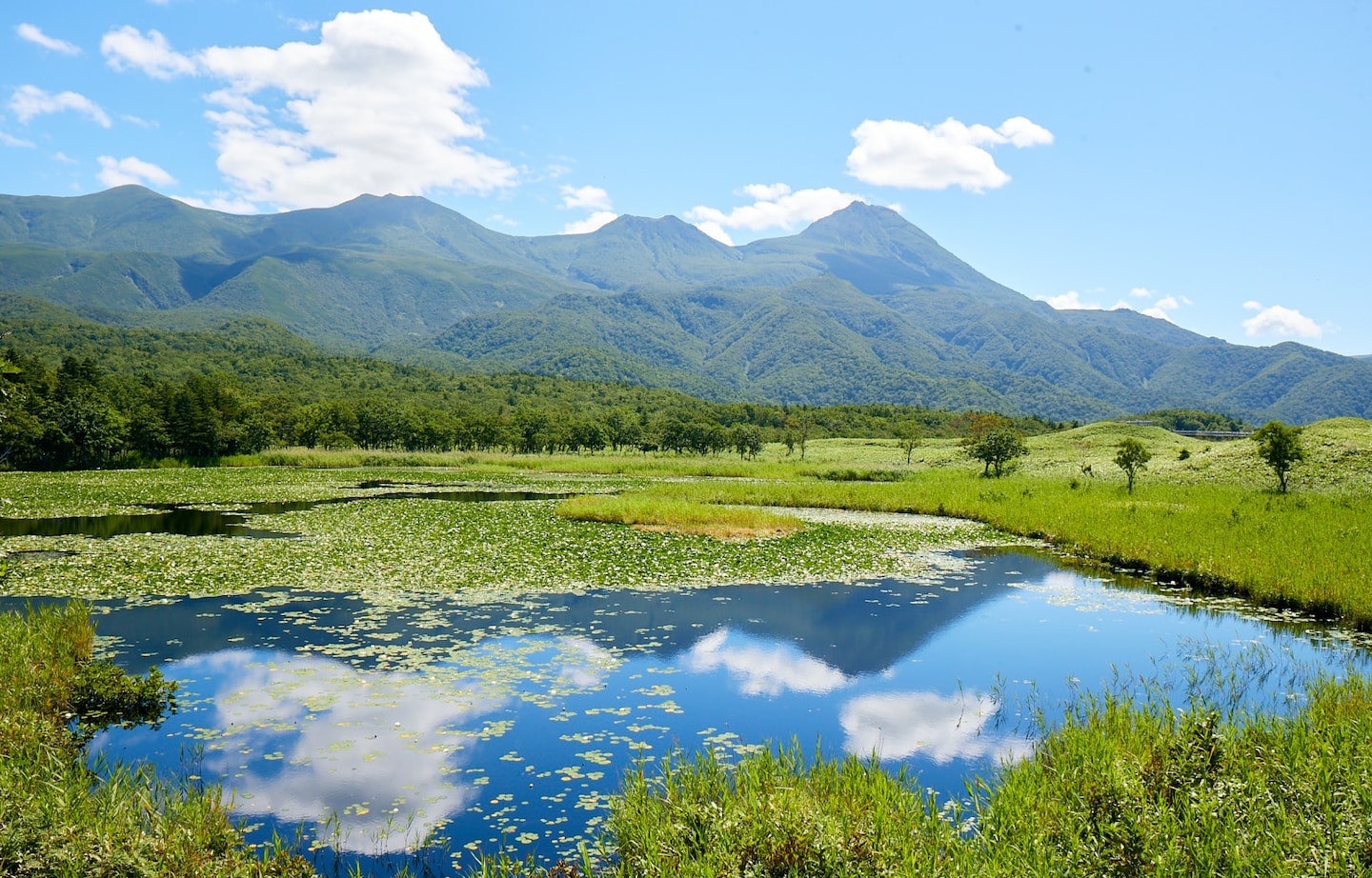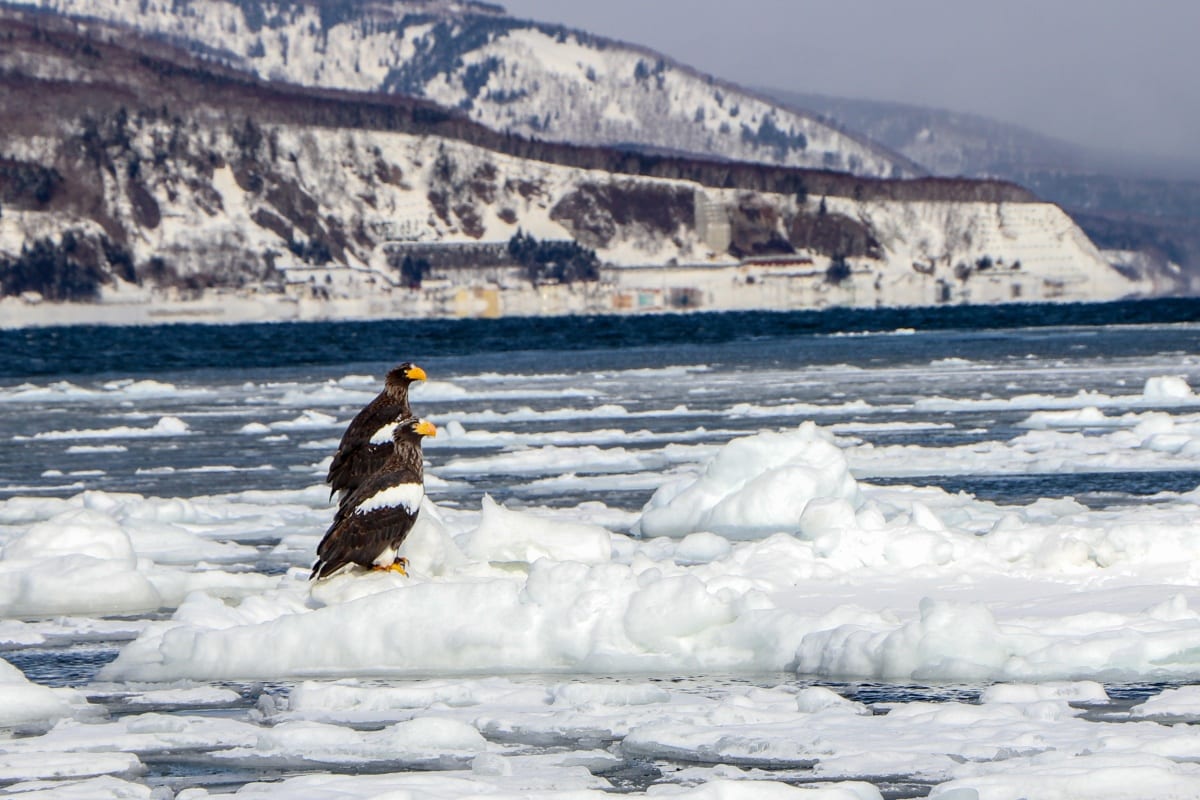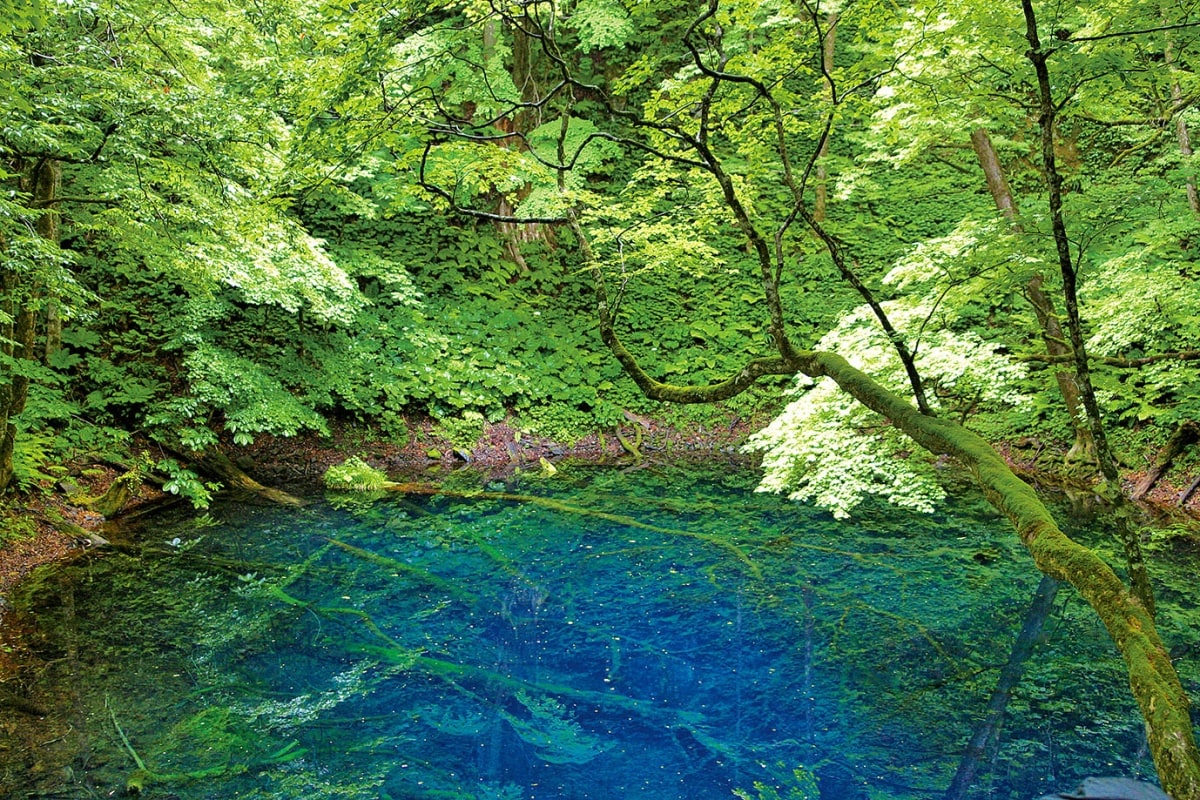Five Amazing Natural Heritage Sites in Japan

Japan is known for the diversity of its natural wonders, stretching from far northern ice packs to lush forests and tropical island beaches to the south. The range of flora and fauna found in these locations is astounding. Here are five of the most fascinating locations, all of which have been selected as World Natural Heritage Sites by UNESCO.
By AAJ Editorial Team“30 Things to Do by 2030 in Japan’s Natural World Heritage Sites”
https://world-natural-heritage.jp/30thingstodoby2030_EN
The Shiretoko Peninsula

© Rausu Town Hall
Shiretoko is an indigenous Ainu word that means the end of the earth. It’s a fitting description for this peninsula that stretches from the island of Hokkaido, Japan’s northernmost, some 70 kilometers into the Sea of Okhotsk. This rugged land hosts a wide variety of landscapes, including massive active volcanoes, lush forests and spectacular waterfalls. One of its most unforgettable geographic highlights are the jagged ice floes, formed when the water from the Amur River freezes just offshore. It is the southernmost place in the world where sea ice forms in the northern hemisphere, the reason the peninsula was placed on the UNESCO World Heritage List in 2005.
The peninsula also plays host to a diverse array of wildlife, headed by the brown bear, a species that can grow more than 2 meters tall. Visitors can often see the bears from cruise boats, as they hunt along the shoreline. The Yezo sika deer, the Yezo red fox and the Eurasian red squirrel are among other animals that populate the forests, while killer whales often visit the waters around the peninsula. Nature lovers will find plenty to catch their interest in this wilderness wonderland.
The Shirakami-Sanchi Mountain Range

© Shirakami Sanchi Visitor Center
The Shirakami-Sanchi Mountain Range sprawls over some 130,000 hectares of Tohoku, the northern part of Honshu, Japan’s largest island. Some 17,000 hectares of this area make up the first Japanese site to be inscribed on the UNESCO World Heritage List in 1993. The range was chosen as home to one of the largest virgin beech forests in East Asia.
The Seibold’s beech that makes up this woodland is a large, deciduous tree that emerged here at the end of the last glacial period, and the forest is little changed over the last 8,000 years. Beech forests once covered most of northern Japan but the trees were replaced by farmed cedar plantations in many areas. Today, they still thrive here, playing an important part in maintaining a lush environment, retaining water from the rainfall and the heavy snows that fall on this tall mountain range. The forest supports a range of wildlife, including the Asian black bear, and the Japanese serow (an antelope-like animal). The tree canopy is home to some 94 species of birds, among them the endangered golden eagle and the black woodpecker.
Ogasawara Islands

©Ogasawara Village Tourism Bureau
The Ogasawara Islands are the most distant region of Japan under Tokyo city administration. They sit far to the south, some 1,000 kilometers and a 24-hour boat ride away, in the middle of the Pacific Ocean. At various times in their long history, they have hosted settlers of various nationalities, including British, American, and Japanese, but have been part of Japan since 1876. The remote location has resulted in the islands’ development as a distinctive ecosystem with many endemic species, a condition that led to their inscription on the World Heritage List in 2011. They have been referred to as a “laboratory of evolution.”
Chichijima (Father Island) and Hahajima (Mother Island) are the only 2 of the more than 30 islands that are inhabited. All of them, however, are marked by lush vegetation, sandy beaches and deep blue waters. The islands are ideal for lovers of the great outdoors and ecotourism. Various tour programs include swimming, diving, snorkeling, sea kayaking, hiking and sailing. Among the wealth of wildlife species here are the Bonin flying fox, a critically endangered bat, and almost 195 endangered bird species as well as over 400 native plants. Beside the many endemic species are many others from southeast and Northwest Asia.
Yakushima
©Yakushima Recreation and Forest Conservation Management Committee
Yakushima is a small island of a little more than 500 square kilometers, located just 60 kilometers south of the island of Kyushu. It features an incredibly diverse landscape, from pristine beaches to a range of mountains reaching over 1800 meters high. Some 20 percent of the island was recognized as a World Natural Heritage Site by UNESCO in 1993. Heavy rains caused by the Kuroshio current fall on the island year-round, resulting in a lush interior marked by emerald-colored mosses, gushing streams, and—the island’s largest claim to fame—the incredible Yakushima cedar trees.
Japanese cedars are an endemic species that grows wild only in Japan. Although most Japanese cedars can reach an age of 500 years, some of the Yakusugi cedars that grow here are more than 1000 years old. Many visitors make the trek up to the Jomon Sugi cedar tree, with its 16-meter circumference trunk and 22.2-meter height. The primeval forest is also home to over 1,900 varieties of plants, with over 70 of them indigenous to the island. Visitors also have a chance to catch sight of animals like the Yakushika deer and a subspecies of the Japanese macaque. One of the beaches on the island is known as the largest loggerhead turtle nesting area in the North Pacific.
Amami-Oshima Island, Tokunoshima Island, Northern Part of Okinawa Island, and Iriomote Island

© Oceanz
Fascinating, wild areas on these four islands were incorporated into a UNESCO World Natural Heritage Site in 2021. The areas are rich in unique ecosystems and many unique lifeforms evolving after the islands broke off from the mainland sometime between 12 and 2 million years ago.
Amami-Oshima’s Kinsakubaru Forest, for example, is home to such primal woodland species as evergreen oak, tree fern, and 10-meter-tall Chinese guger trees. This island and Tokunoshima, just south, are the only habitat of the Amami rabbit, a rare species with no close relatives anywhere else in the world. Tokunoshima is also where togyu, a sport where bulls compete in sumo-like pushing matches. The lush, subtropical jungle that makes up the Yambaru forest on the northern stretch of Okinawa Island offers locations for hiking, kayaking, canyoning, and other outdoor activities. Visitors also come here to catch a glimpse of the native Okinawa rail, or Yambaru kuina, a bird whose existence was recognized only about 40 years ago. Further south, Iriomote Island’s remote location is the only place where the Iriomote cat can be found in the subtropical forest. All the areas offer superb locations for ecotourism and wilderness exploration.
“30 Things to Do by 2030 in Japan’s Natural World Heritage Sites”

For tips on how to enjoy these five heritage sites, with suggested itineraries ranging from “forest bathing” in serene beech forests and hiking ancient trails to swimming with dolphins or visiting with a village storyteller, download this informative digital brochure—“30 Things to Do by 2030 in Japan’s Natural World Heritage Sites. By downloading this brochure, you can look up World Heritage sites anytime, anywhere. You can also enrich your World Natural Heritage trip by accessing detailed information in route.
https://world-natural-heritage.jp/30thingstodoby2030_EN



